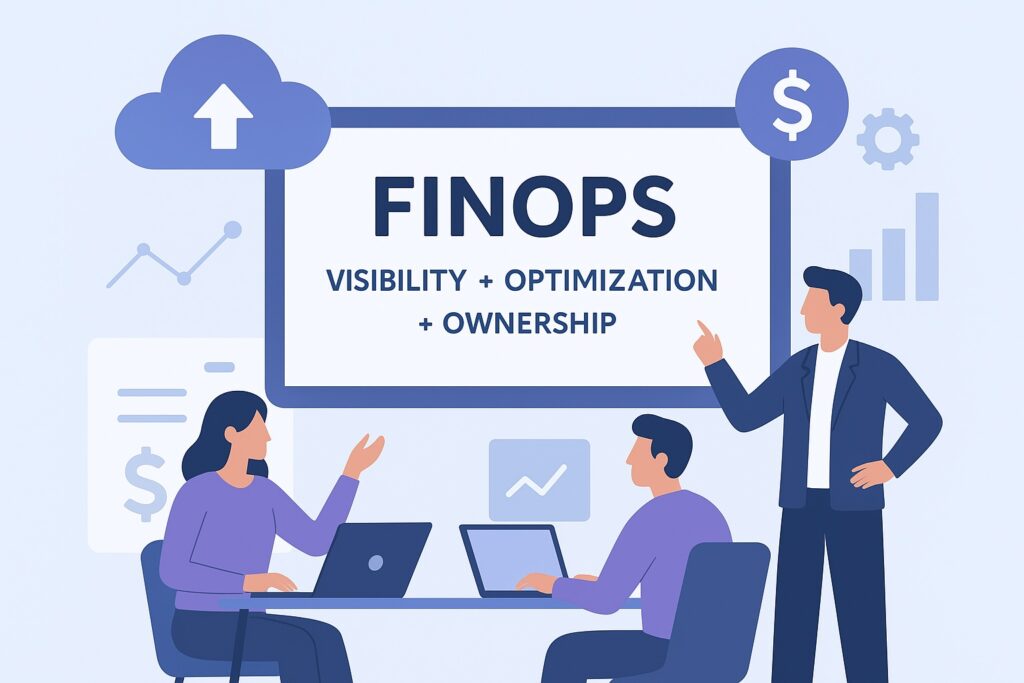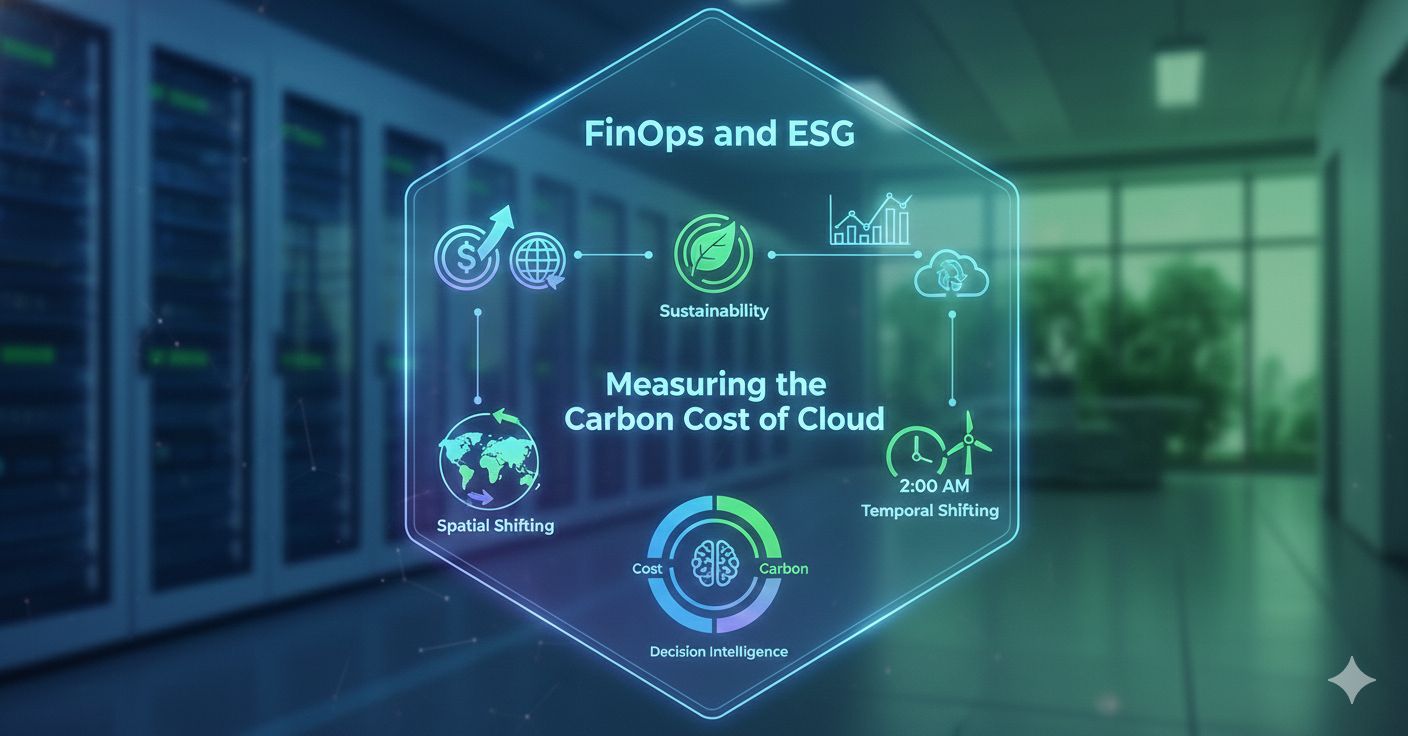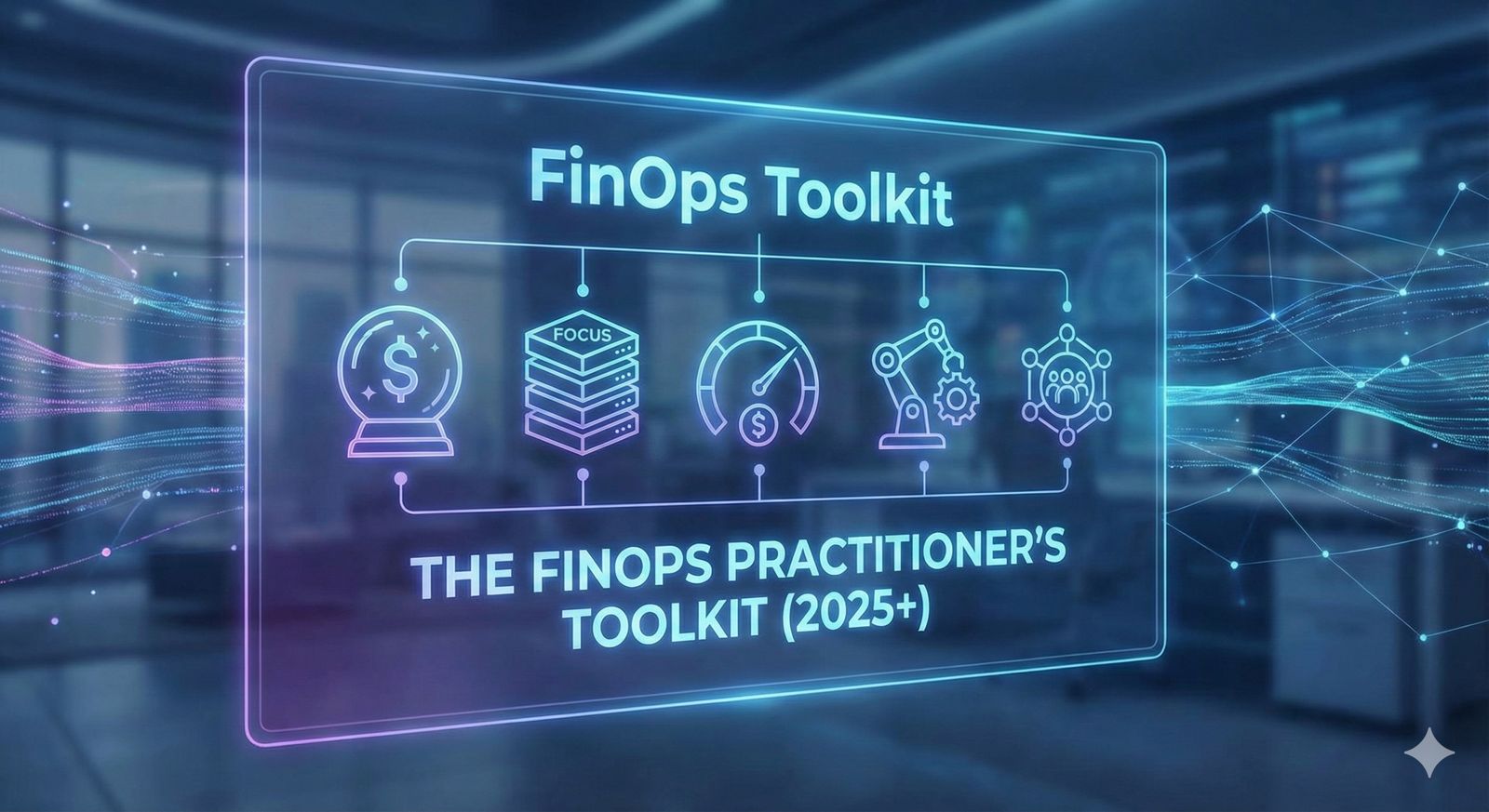Cloud promised simplicity: pay for what you use, scale on demand, and only pay for peak when you need it. Instead, many teams met the unexpected complexity of runaway bills, unclear ownership of cost, and endless debates between finance and engineering.
FinOps is not another cost-cutting fad. It’s a practical, cross-functional language and operating model that translates cloud spending into business value so teams can move fast without breaking the budget.
That moment is where FinOps begins: at the point of human frustration, not in a spreadsheet.”
What FinOps Really Means (Beyond Cost-Cutting)
FinOps (Financial Operations for cloud) is an operating discipline that aligns finance, engineering, product, and operations, so cloud spending delivers measurable business value.
FinOps = Visibility + Optimization + Ownership
- Visibility – Everyone understands where money flows and why.
- Optimization – Teams make trade-offs between speed, cost, and quality using data.
- Ownership – Engineers and product teams take responsibility for the costs they create.
FinOps changes the question from “How much did we spend last month?” to “Are we getting the right business outcome for this spend?”
Why PMs, Finance Leaders, and Engineers Must Speak the Same Language
The core problem is not the bill it’s the communication gap.
- Finance sees numbers without system context.
- Engineering sees systems without cost context.
- Project Managers see delivery without profitability context.
A shared FinOps language lets teams ask outcome-focused questions and make aligned decisions.
FinOps gives every function the same language to ask the right questions and make shared decisions based on business impact, not departmental instincts.
Role comparison
- Finance Old: “We’re overspending.” FinOps: “Here’s cost per feature and cost per customer.”
- Engineering Old: “We need more instances.” FinOps: “If we right size or schedule non-prod, we keep performance and reduce cost.”
- Project Management Old: “Budget overrun alert.” FinOps: “This scale was forecast; ROI stays positive here’s the mitigation plan.”
When those perspectives align, you get faster, better trade-offs: feature scope that reflects value, capacity decisions grounded in cost-per-outcome, and budgets tied to measurable results.
- Practical analogy FinOps is to cloud what budgeting is to business
- Imagine running a company without a budget: surprise expenses, reactive decisions, and poor visibility.
- Budgeting gives business structure and foresight. FinOps gives the same to cloud spending but at engineering cadence.
- Tracks income and expenses, whereas FinOps tracks usage and cost allocation
- Encourages financial discipline, FinOps encourages cloud resource discipline
- Aligns spending with strategic goals FinOps, aligns cloud cost with business outcomes
Both disciplines are not simply about cutting costs; they’re about spending wisely to create value. FinOps moves teams from asking “What’s our cloud bill?” to “What value did we create for this cost?”
Quick Starter Playbook First 90 Days
Move from chaos to repeatable practice with a short, focused plan.
- Day 0–30: Visibility
- Inventory accounts and enforce a tagging baseline.
- Build a dashboard with total spend, top services, and top teams.
- Run a one-time cost attribution to identify hotspots.
- Day 30–60: Early Optimizations
- Right size top instances and schedule non-prod shutdowns.
- Add cost alerts for anomalies and sudden spikes.
- Hold the first cross-functional cost review with PM, engineering lead, and finance.
- Day 60–90: Institutionalize
- Define monthly FinOps review cadence and RACI.
- Add cost checks into CI/CD or release gates.
- Create a small automation backlog: tagging enforcement, scheduled shutdowns, and reserved instance analysis.
Small repeatable moves compound into governance. The aim is to convert one-off wins into a culture of continuous improvement.
Common Pitfalls and How to Avoid Them
- Treating FinOps like a project with an end date instead of an operating capability.
- Expecting large savings without first getting visibility and attribution.
- Centralising control to the point of stifling team ownership; controls should be guardrails, not handcuffs.
- Using vanity metrics such as absolute spend reduction without linking to unit economics or value.
Avoid these by keeping ownership distributed, metrics tied to outcomes, and iterations short and measurable.
FinOps is the bridge between finance’s precision and engineering’s velocity. It creates a shared language that turns cloud spending into a measurable business outcome and a competitive advantage.
Over the next weeks I’ll unpack the FinOps lifecycle, maturity models, tooling, real-world playbooks, and how FinOps links to ESG and AI-driven optimization. If you’re managing cloud spend, leading change, or building product value, learning this language will pay off quickly.
#FinOps #CloudFinance #CloudOptimization #ProjectManagement #DigitalTransformation #FinOpsPractitioner




